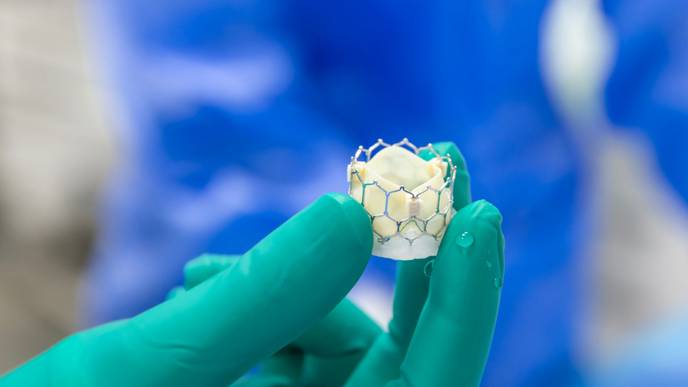ReachMD
Be part of the knowledge.™Transcatheter Valve Replacement Outcomes Similar to Surgery

A new study demonstrated parity between a minimally invasive procedure to replace the aortic valve in the heart—transcatheter aortic valve replacement (TAVR)—and surgical aortic valve replacement (SAVR).
In the meta-analysis of seven randomized trials, published in JSCAI and presented at the 2024 EuroPCR conference in Paris, France, researchers compared the outcomes of 7,785 patients undergoing TAVR (a procedure that delivers a new aortic valve into the heart through a catheter) to those undergoing SAVR for severe aortic stenosis. The study found no significant difference in death or disabling stroke between TAVR and SAVR patients (HR 1.02, 95% CI 0.93–1.11, p=0.70) with similar long-term mortality risks.
“This study represents the largest scale analysis so far available comparing longer-term percutaneous devices for aortic valve replacement versus surgery,” said study coauthor Eliano Pio Navarese, MD, PhD, head of clinical experimental cardiology and associate professor at the University of Sassari in Italy. “Our findings support the comparable long-term safety and efficacy of TAVR, as well as raise important considerations for valve type selection, particularly when we are dealing with longer-term valve durability and pacemaker implantation.”
The results were consistent across different surgical risk profiles (low, intermediate, and high). Compared with SAVR, TAVR was associated with an increased likelihood of needing a pacemaker and moderate-to-severe paravalvular leaks.
Notably, on a prespecified analysis, the study addressed the outcomes of two distinct TAVR devices versus SAVR. Compared with SAVR, self-expanding TAVR prostheses demonstrated lower death or stroke risk (P=0.06), valve thrombosis (P= 0.06), and valve gradients (P<0.01) but higher pacemaker implantation rates (P < 0.01) than balloon-expandable TAVR, highlighting potential long-term differences between the two percutaneous TAVR devices.
[ARTICLE LINK to go live at embargo lift: https://doi.org/10.1016/j.jscai.2024.102143]
###
About Society for Cardiovascular Angiography & Interventions (SCAI)
The Society for Cardiovascular Angiography & Interventions, established in 1978, stands as the primary nonprofit medical society dedicated to representing invasive and interventional cardiology. SCAI's mission is to guide the global interventional cardiovascular community by fostering education, advocacy, research, and upholding standards for quality patient care. For more than 40 years, SCAI has exemplified professional excellence and innovation worldwide, cultivating a reputable community of over 4,500 members committed to advancing medical science and providing life-saving care for individuals, both adults and children, affected by cardiovascular disease. For more information, visit https://scai.org/.
Method of Research
Meta-analysis
Subject of Research
People
Article Title
Long-Term Outcomes of Transcatheter vs Surgical Aortic Valve Replacement: Meta-Analysis of Randomized Trials
Article Publication Date
15-May-2024
Disclaimer: AAAS and EurekAlert! are not responsible for the accuracy of news releases posted to EurekAlert! by contributing institutions or for the use of any information through the EurekAlert system.
Facebook Comments